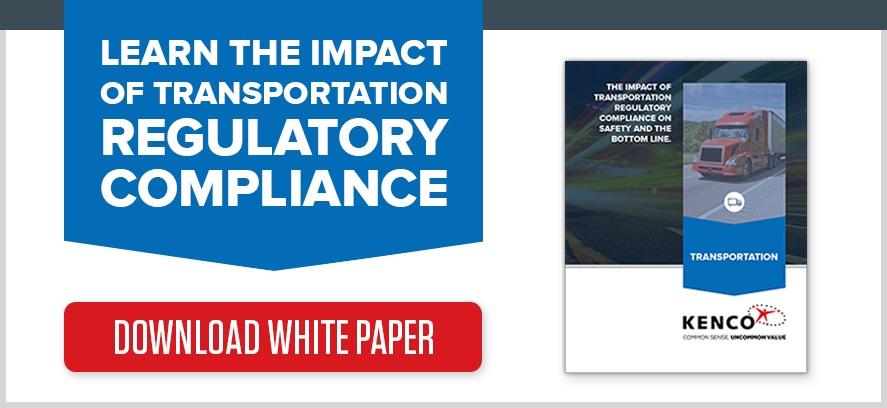Kenco's safety programs embody industry best practices, on top of FMCSR (Federal Motor Carrier Safety Regulations). In 2015, our programs were recognized with numerous awards for reducing collisions and enhancing safety on our highways. The insight behind our success is safety is everyone’s responsibility. Site managers and dedicated safety coordinators propagate safety awareness throughout Kenco. We are keyed into one ultimate goal—to bring each driver and associate home safely every day.
The essential first step in driving safety across your transportation fleet is optimal training for drivers and supervisors. Some of the hazards we’ve come to expect and educate our drivers are as follows:
- The most common on-road hazard:
Distracted driving by other drivers. Rather than using complete awareness with their surroundings, other drivers may be talking on cell phones, texting, listening to loud music, or be generally oblivious to those around them—particularly to large trucks. Fleet safety depends on driving defensively in this context and being able to adjust to mistakes or erratic driver behaviors.
The trend in trucking is to encourage drivers with a good defensive driver training program. A curriculum of training topics should be provided to drivers in a way that helps them retain the information, modify undesirable behavior, and create awareness with others. This can be accomplished on a month-to-month basis or quarterly. Professionally produced digital trucking magazines with safety messages from top executives also encourage a culture of safety-first.
- The most common off-road hazard:
Training and Correcting with Technology
We require our drivers to complete a JJ Keller interactive training video every month. It’s documented with completion times and graded based on captured answers. Smith System and the National Safety Council also offer good programs.
The trucking industry uses remarkable diagnostic technology more and more these days. At Kenco, we coach drivers with corrective techniques. For the last couple of years, we have used the SmartDrive Camera system, utilizing outward and inward facing cameras on our OTR trucks. Certain triggers for hazardous situations are captured and drivers are then given techniques and coached to correct any unsafe driving behaviors.
Other technologies commonly used to identify hazards and improve equipment include:
- Lytx Drive Cam, another camera system
- Benedix’s air brake charging and control + AutoVue Lane Departure Warning system
- Truck rollover avoidance systems
Team Safety Culture and Measuring Progress
Next to training your fleet and all those who support their work, attracting drivers with impeccable driving records and the ability to communicate the safety message is another optimal way to drive safety across your fleet. These drivers are heralds of the safety-first message to their co-workers and all those in the communities where they live and work.
After hiring impeccable drivers, hiring qualified drivers and enabling their growth is another important focus area. Before hiring a driver, conduct a thorough background search for major violations or a pattern of unsafe driving behavior. Past actions are a good predictor of future behaviors. It would be wise to pass on a candidate with a significant history of poor performance. If a candidate shows up with minor infractions, it’s ideal to provide extra training addressing issues and creating trust around future work together.
Annual recognition programs through the American Trucking Associations (ATA) Safety Management Council help to measure progress. They’re a good way to encourage companies and drivers to maintain safety records and develop safety cultures. Other important programs doing this are the State and National Truck Driving Championships and the State and National Road Team programs. In 2015, Kenco was recognized with numerous industry awards for its accomplishments in safety, including:
- ATA (American Trucking Association) President’s Trophy, Under 25 Million Miles category
- First place in the National Truck Safety Contest, General Commodities/Truckload/Line-Haul up to 10 Million Miles
- Safety Improvement Award and Division Improvement Award in the National Truck Safety Contest
- Leadership Award
- The National Safety Professional Award of Excellence




